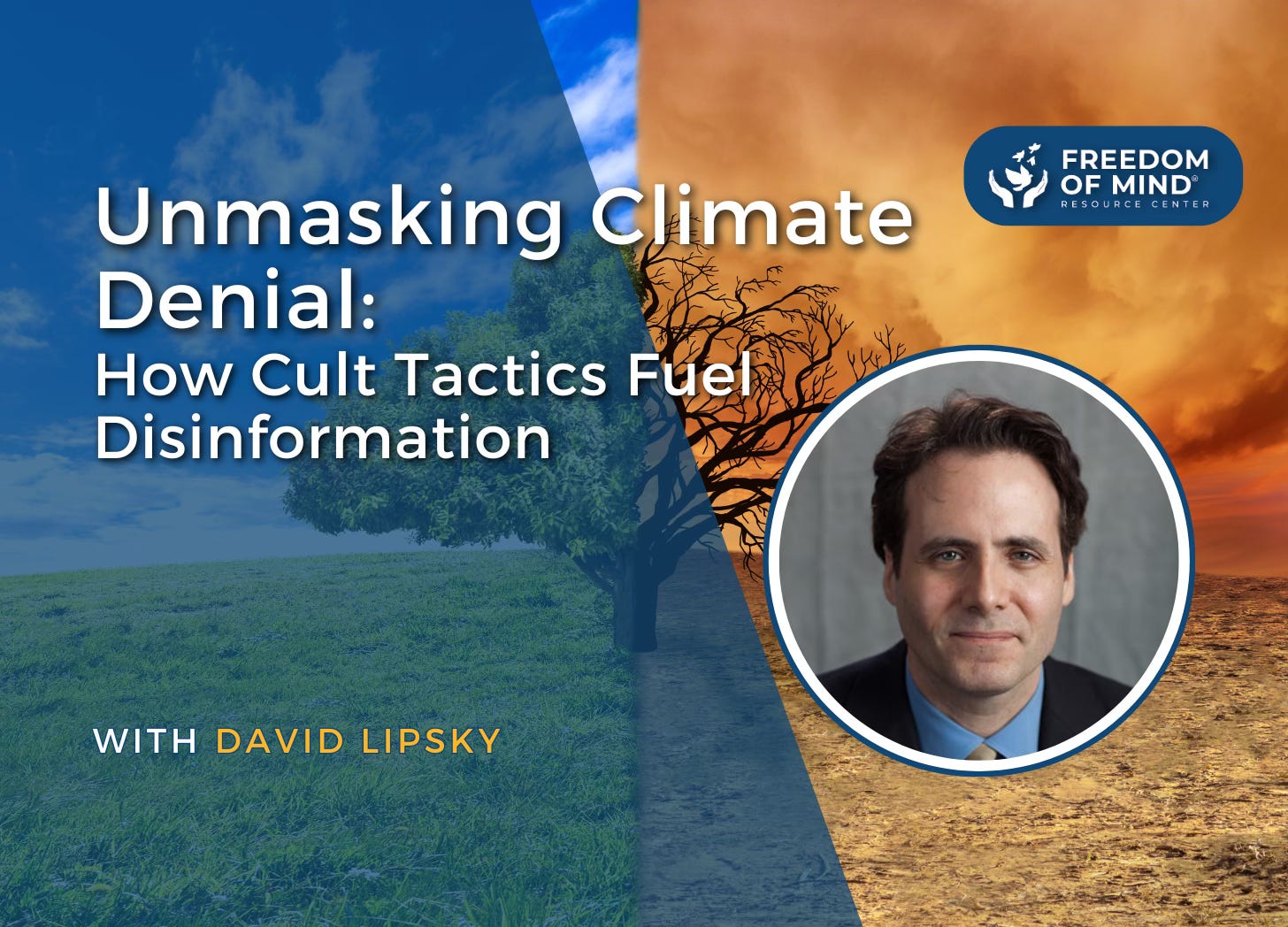In today's world, the concept of cult mind control often conjures images of secluded communes and charismatic leaders. However, the insidious influence of cult-like tactics extends far beyond these stereotypes, infiltrating even the most critical areas of public discourse, such as climate science. In a recent episode of The Influence Continuum, I had the privilege of interviewing David Lipsky, author of The Parrot and the Igloo: Climate and the Science of Denial. This enlightening conversation delves into how anti-science sentiments have flourished in American society, drawing unsettling parallels between cult behavior and climate change denial.
Keep reading with a 7-day free trial
Subscribe to Dr. Steven Hassan to keep reading this post and get 7 days of free access to the full post archives.






